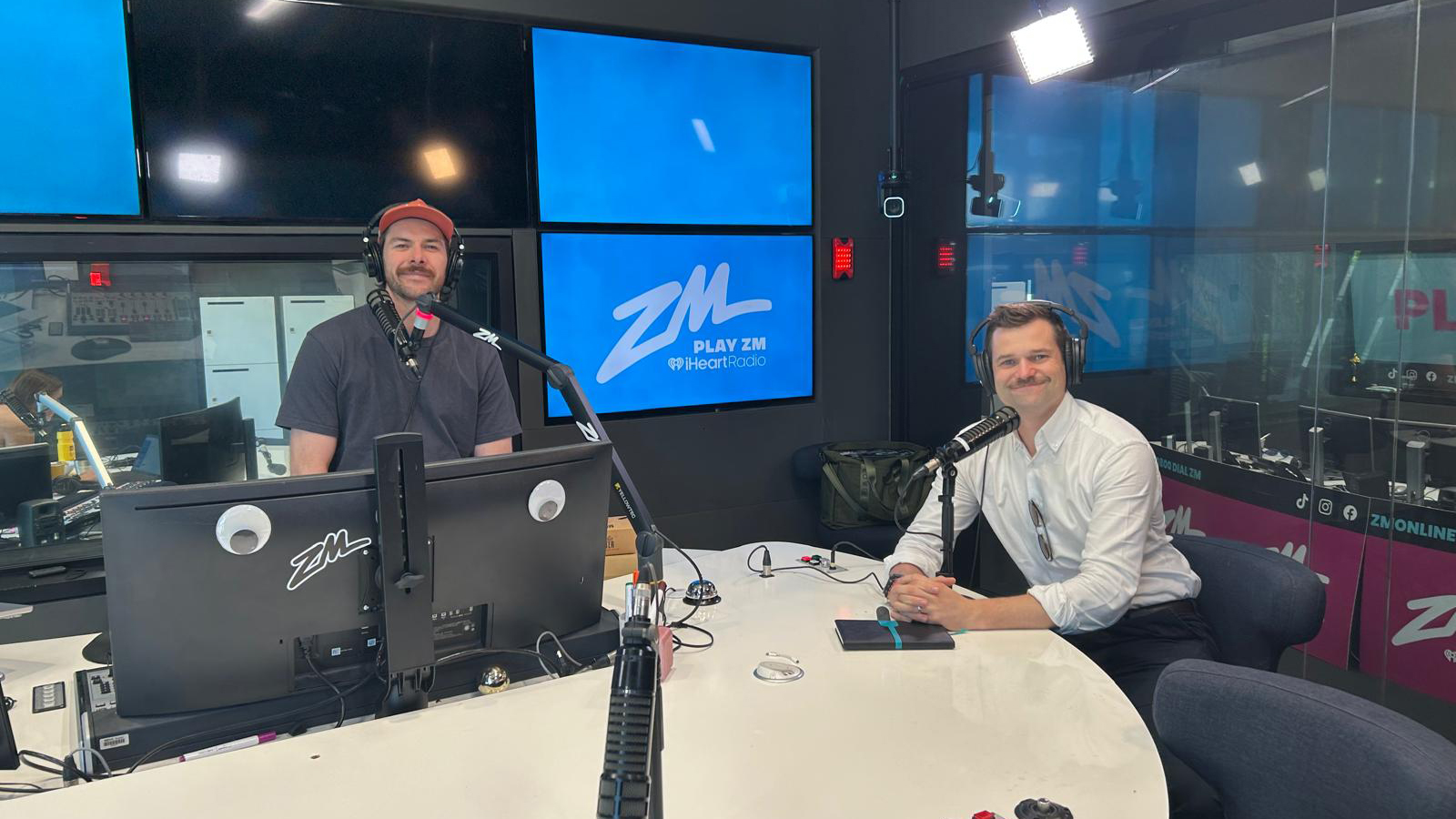DeepSeek became a household name overnight, when it revealed it could compete with its US counterparts at a fraction of the price. Milford Senior Analyst Andrew Curtayne talks with Ryan Bridge about DeepSeek’s sudden emergence, Trump’s reaction, and why it is potentially positive for the AI industry in general.
Listen.
Click here to download the MP3 file or listen to the podcast on your favourite platform:
Read.
Bridge talks Business: 4 February 2025
Episode Transcript
Ryan Bridge
Kia ora, I’m Ryan Bridge and welcome to episode 19 of Bridge talks Business with Milford. Trump’s tariffs are throwing markets around the world into a frenzy, up and down and all around – tariff’s on then tariff’s off, this all in the space of 24 hours. We’ll have more on that shortly. Our feature interview today is tech stocks and the Chinese AI-disrupted DeepSeek, but first the top five business bits from the past seven days.
1. The US Federal Reserve left interest rates on hold as expected. They’re likely to remain unchanged in the short term as they watch the trajectory of inflation and the labour market.
2. Earnings from US companies were solid, if unexciting. Large tech company profits still growing strongly, but at a reduced rate to a year ago.
3. Markets were buffeted by tariff announcements from the Trump administration late last week. Some represent the art of the deal, with some investors pumped about the prospect of tariffs. Once enacted, there is the potential for further volatility in markets.
4. On the other hand, a strong US economy, solid earnings and soaring expectations about the prospects for the US could continue to propel share markets to new highs.
5. Markets were roiled last week by the revelation that China had a strong AI solution in the form of DeepSeek, which ostensibly could deliver comparative performance to the United States’ solutions at a fraction of the cost. Technology stocks suffered large losses at the start of the week, but the markets staged an impressive recovery by week’s end.
Time for our feature interview. Last week you would have seen headlines about Nvidia, that’s the chipmaker. Around a trillion dollars was shaved off its value. This in the space of just a couple of days, all after the emergence of this relatively new and unheard of Chinese AI company called DeepSeek. So we’re going to look into this a little bit further today, try and find out where they came from, what they’re about, how legit this whole thing is and what it means for the future of Nvidia. Just a note that this segment is informational only and should not be considered financial advice. I’m joined by Senior Analyst at Milford, Andrew Curtayne. Andrew, good day.
Andrew Curtayne
Hi Ryan.
Ryan Bridge
Thanks for being with me.
Andrew Curtayne
Not a problem at all.
Ryan Bridge
So, I woke up the other day, opened my phone, saw this story and was like, whoa, I didn’t see this coming, did you?
Andrew Curtayne
Not in the way it came. You know, we probably expected at some point there was going to be some developments which would cause a lot of volatility in the sector, but the news was quite sudden and the impact on stock prices like Nvidia was quite severe.
Ryan Bridge
Tell us what the technology actually is. What are they doing so drastically differently than the AI makers, the ChatGPTs in the US? What have they managed to nail, at least on the face of it?
Andrew Curtayne
This is where it’s interesting, right? They’re not actually doing things that are very different to what the leading US-based AI firms such as OpenAI, which is the owner of ChatGPT are doing. What they’ve done is they’ve just made some incremental improvements in quite a novel way, which is proving to be, according to them, be more cost effective. And, so if you look at what artificial intelligence is doing, it’s using huge amounts of data sets and they put into these models which they call large language models. So it’s got billions and billions of data points of human interactions, conversations, research, information from the internet, the web, all of that’s piled into this huge data set and then they run algorithms and models across this data to basically try to imitate human level of intelligence or get as close to it and be able to interpret complex situations. That could be things from quite simple stuff about what happened in history, or what is the information about this data set to complex mathematical problems, or computer coding challenges.
Ryan Bridge
Or if you write “Why do farts smell?” into Google, it’s going to perform a very complicated task and come back and give you an answer.
Andrew Curtayne
That’s right. And then it may choose if it wants to answer that question or not choose to answer it – and models still have some layers in it like that. So what’s going on? You’ve got this, let’s call it sort of a bit of an arms race, where all these companies around the world are trying to take the next step forward and the more advanced model or the model that can give better outputs and more accurate outputs. What this Chinese company DeepSeek have done, is they’ve taken kind of the next step forward in a few model developments, and they’ve just come up with a relatively novel way to kind of take all this complex data, segregate it into smaller little packages, and therefore analyse those smaller data sets, and be able to come up with very good answers that are on par with the best other US-based models – but doing it at a slightly, what they claim is a much, much cheaper cost. And so if it’s a cheaper cost, it means it’s more affordable, it means more companies can use it and they pay less to use that, kind of the outputs they’re getting. So, why is the AI market recoiling or sort of panicking about this? Well, it means that maybe we don’t need to spend as much money to build these huge data sets. Nvidia is doing hundreds of billions of dollars of sales with the super high powered computer chips, which is essentially the engine behind these large language models. If we can do them for a lot cheaper, then do we need to spend all that money? That’s why you have this really severe share price rate.
Ryan Bridge
And that’s why you would see a company like Nvidia, which is a chip maker, being quite badly affected as opposed to an AI company which presumably could adopt some of this technology that they’re using and perform better in the future.
Andrew Curtayne
Yeah, well actually both potentially – and that’s right, it depends exactly where in the AI framework you sit. But if we look at Nvidia for example, they are without doubt the kind of AI poster child. It’s because they develop the most sophisticated chips, they call them GPUs and these are the engine to training large language models. If you look at global sales at the moment, Nvidia’s doing around about $200 billion of annual sales. Most of this is going into training or processing these large language models. So, the obvious step is ‘well, if we can train a model for 10 times more efficiently’ – which is what DeepSeek is saying – we can do this at 10 to 20 times lower cost or more efficient than the current US models at the moment. Well, then you might say, we’ll need 10 times less Nvidia chips. But there’s a lot of complexity of why that’s not exactly true and why it probably won’t hold true, but that is the initial reaction that the market’s trying to understand.
You touched on other AI companies. Now, the obvious one that people talk about is ChatGBT – it’s owned by a company called OpenAI. Their founder is a CEO called Sam Altman and so that’s been within the AI model part of the sector – they have been the poster child of that part. The other ones that came up with that original ChatGBT model about a year and a half, two years ago, which took the world by storm. Now for them this is quite negative because you’ve got this Chinese competitor who’s got less resources, has built a clever way of processing models for a more efficient manner. Then all of a sudden you go, ‘why should OpenAI be valued at what is reported to be around about a $300 billion valuation?’ Maybe they’re not worth that much, maybe they’re only worth $100 billion. So, if you’re Sam Altman at OpenAI at the moment, you’re probably scrambling a little bit to show that you’re going to do a new model very quickly which leapfrogs in front of DeepSeek.
Ryan Bridge
Right. Because otherwise it looks like any old Johnny-come-lately from China can usurp you.
Andrew Curtayne
Yeah, no that’s right and it has been developing a little bit on that front because DeepSeek came out and they said look, we’ve developed this model for $6 million is what they’re saying. Because US companies are doing it for hundreds and hundreds of million dollars. There’s a lot of information coming out that may not be exactly true.
Ryan Bridge
And this is the interesting part about the fact that this particular company is based in China, right? You don’t know in terms of the security of some of the information you put on there, it’s not 100% guaranteed who or what agencies inside of China might have their hands on that or be able to look at that information. And also some of the answers and responses that were being gleaned from searches on DeepSeek were probably stuff that you wouldn’t find show up if you were doing a search on Google here or on chat GPT in the United States, right? And that then opens the door to regulatory questions and you will see what happened with TikTok. So, how does the potential for regulation affect the value of both ChatGPT and something like DeepSeek?
Andrew Curtayne
This is a very fast moving space at the moment. So, if you look at it from regulatory side, we’re kind of thinking what is the US trying to achieve here? Now US under both Biden and Trump, were very keen to make sure that the US is the leading country in the world in terms of developing artificial generative intelligence. And they see your AI as being potentially a benefit to them going forward relative to other countries around the world, but also as a threat. If you look at what could be a big challenge to global powerhouses over the next 10, 20, 50 years, it could be AI. And so the US is very firmly focused on making sure they are the leader in global AI. So what they’ve already done, and this is going back over the last year or two, is put restrictions on these super advanced chips. A lot of them are coming out of Nvidia, and where they can be sold globally. And they’ve restricted China from getting access to the latest and most powerful computer chips. Now what that does, is it’s supposed to handicap China from being able to develop as good a models as what’s been developed in the US. Now all of a sudden China’s gone and developed a model which is kind of as good as the US competitors, with less access to the chips. They’re probably still getting some of the chips. You know, there’s stories of chips being sent over the Himalayas and into China. So, I think they have been getting them through the black market, but they probably haven’t got anywhere near as much as the US.
So what is the US going to do now? What we’ve seen in the last week or so, Trump has come out and he’s basically reaffirming that he agrees with some of the restrictions that Biden put on in the last year or two. He’s also removing red tape around the development of the US AI industry. Now the red tape that I’m talking about was some restrictions that Biden put in, which was trying to do safe development of AI.
Ryan Bridge
Guard rails.
Andrew Curtayne
Exactly. We’ve all seen the movie Terminator where AI goes and takes over the world. So call it the sort of restrictions that are meant to stop AI doing things that we don’t want it to do, and making sure it’s safe. Trump is basically saying, look, I’m going to remove those restrictions. You guys go and build, spend whatever you can to ensure that the US is going to be the leader in AI. I think Trump’s going to double down on all this and he’s probably going to do maybe tougher restrictions on China.
Ryan Bridge
Yeah. With Elon Musk at his side, I’m sure the sky’s the limit when it comes to getting rid of regulations.
Andrew Curtayne
And Elon loves AI.
Ryan Bridge
Exactly. Just to finish, what does all of this mean for our position, your position when you’re looking at what to invest in, in terms of tech stocks? Are you cautious right now? What does it mean?
Andrew Curtayne
Yeah, we’ve been sounding doom and gloom on this, but we’ve got to remember that this is actually a positive thing for economies, a positive thing for most companies. So, if we’re talking about the cost of artificial intelligence being 10 times cheaper, that means we’re going to be able to use it in our daily lives at a much cheaper cost. So, let’s look at a company, for example, like Facebook. Facebook is a big user of AI. They’re both investing in it, but they’re using it because they want AI to be accessible on your phone whenever you go on WhatsApp or Meta and be able to search AI. But there’s a cost to running those queries. Every time you do a search, they have to process that through some advanced processes. There’s a cost to it. Well, if it’s becoming more efficient, that means they can give us more tools, more products, more access to AI at a cheaper level. And this flows into almost every business in the world, right? If AI develops faster because it’s more efficient, then companies can lower their cost. They can probably look at replacing more humans, which lowers costs, but it also makes the companies more efficient. So on a general perspective, it’s probably a good thing if you look at the economy as a whole. Some companies are a little bit more impacted, such as Nvidia or OpenAI. But from Milford, how we’re looking at the AI space, is it’s very diversified. We invest across a lot of different companies that are impacted from AI, and that’s from copper businesses, which produce a lot of copper that goes into data centers. We invest in the data center businesses themselves. We invest in the cloud companies, which are doing a lot of the processing capability around AI, such as Microsoft, Amazon, Oracle.
And then we invest in software companies, which we think are going to be early users of AI tools, such as Salesforce, ServiceNow, and other businesses along that line. So we’re very spread, and we don’t really want to concentrate risk into one stop, such as in Nvidia.
Ryan Bridge
Thanks, Andrew. That was Andrew Curtayne, Senior Analyst at Milford, talking about DeepSeek and Nvidia, and what all these changes might mean for tech stocks going into the future. Don’t forget you can like and subscribe this podcast, this vodcast, wherever you get your podcasts. We’d love to have you join and subscribe and comment in the comment section. Also next week, we’re going to be looking at Trump’s tariffs with Mark Riggall. Mark is going to come in and give us a helicopter view of tariffs going on, tariffs going off. What does that mean for the stability of global markets? How on earth do you predict and work in an environment like that? Not just here in New Zealand, but in markets all around the world. We look forward to that chat next week.
Missed last week’s episode? Don’t worry! Click here to catch up now.


